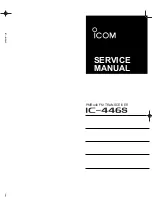
HX500S
Page 24
this manual, and select an appropriate channel for communications after
initial contact. For example, Channels 68 and 69 of the U.S. VHF Charts are
some of the channels available to non-commercial (recreational) boaters.
Monitor your desired channel in advance to make sure you will not be inter-
rupting other traffic, and then go back to either channel 16 or 9 for your initial
contact.
When the hailing channel (16 or 9) is clear, state the name of the other
vessel you wish to call and then “
this is
” followed by the name of your vessel
and your Station License (Call Sign). When the other vessel returns your
call, immediately request another channel by saying “
go to
,” the number of
the other channel, and “over.” Then switch to the new channel. When the
new channel is not busy, call the other vessel.
After a transmission, say “
over
,” and release the microphone’s push-to-talk
(
PTT
) switch. When all communication with the other vessel is completed,
end the last transmission by stating your Call Sign and the word “
out
.” Note
that it is not necessary to state your Call Sign with each transmission, only at
the beginning and end of the contact.
Remember to return to Channel 16 when not using another channel. Some
radios automatically monitor Channel 16 even when set to other channels or
when scanning.
8.3 OPERATING ON CHANNELS 13 AND 67
Channel 13 is used at docks and bridges and by vessels maneuvering in
port. Messages on this channel must concern navigation only, such as meet-
ing and passing in restricted waters.
Channel 67 is used for navigational traffic between vessels.
By regulation, power is normally limited to 1 Watt on these channels. Your
radio is programmed to automatically reduce power to this limit on these
channels. However, in certain situations it may be necessary to temporarily
use a higher power. See page 14 ([
H/L
] key) for means to temporarily over-
ride the low-power limit on these two channels.
















































